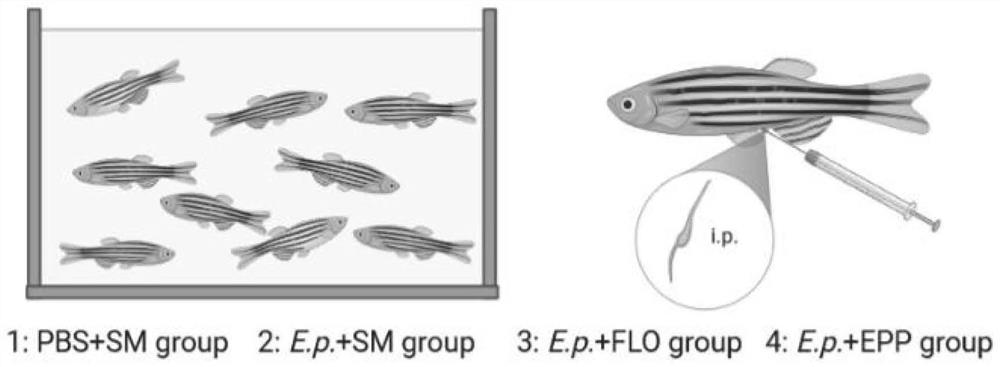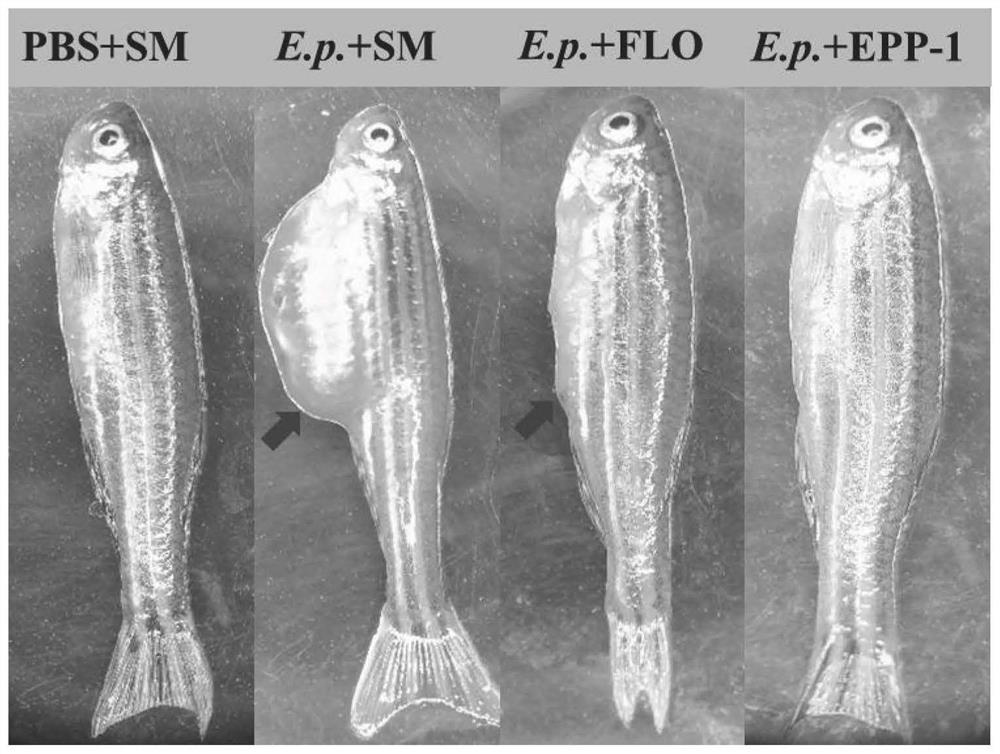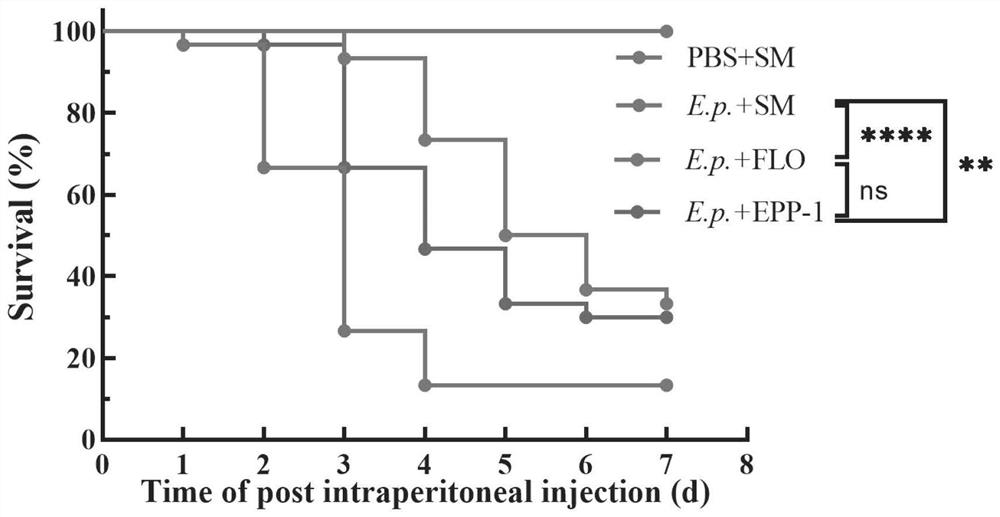Safety evaluation method for edwardsiella disease phage therapy in aquaculture
A technology for safety evaluation and aquaculture, applied in the field of safety evaluation of Edwardsiella disease phage therapy in aquaculture, can solve the problems of lack of application, limited number of pure cultures, and lack of comprehensive understanding of the impact of fish safety. To achieve the effect of prevention and control
- Summary
- Abstract
- Description
- Claims
- Application Information
AI Technical Summary
Problems solved by technology
Method used
Image
Examples
Embodiment 1
[0021] Example 1 Comparison of zebrafish infection symptoms
[0022] Four groups of fish tanks were set up, namely control group (PBS+SM), pathogen infection group (E.p.+SM), antibiotic treatment group (E.p.+FLO) and phage treatment group (E.p.+EPP-1), with 30 fish in each group, It is administered by intraperitoneal injection, specifically as figure 1 shown. Except for the control group, the infection dose of the other groups was 10 5 CFU / tail fish, the concentration of florfenicol in the antibiotic treatment group was 10 mg / kg fish weight (the standard dose recommended by the FDA for the prevention and control of Edwardsiella), and the concentration of phage EPP-1 in the phage treatment group was MOI=1. Continuous monitoring was performed for 7 days. Mortality of zebrafish was recorded daily and survival curves were drawn. The zebrafish are fed with Artemia hatched by themselves in the laboratory. They are fed once a day at 9:00 am and 16:00 pm. The amount of Artemia is s...
Embodiment 2
[0024] Example 2 Comparison of therapeutic effects between bacteriophage EPP-1 and florfenicol
[0025] The survival curves of zebrafish under different treatment regimens are as follows: image 3 As shown, the zebrafish survival rate of the control group (PBS+SM) was 100% in the 7-day culture period, which means that the PBS and SM buffers are harmless to the zebrafish and the physical manipulation of the injection will not cause the zebrafish to die; In the pathogen infection group (E.p.+SM), the survival rate of zebrafish was only 13.33% in the 7-day culture cycle; in the antibiotic treatment group (E.p.+FLO), the zebrafish survival rate was 33.33% in the 7-day culture cycle. , compared with the pathogen infection group, it increased by 20%, reaching a very significant level (p<0.0001, Mantel-Cox test); the phage-treated group (E.p.+EPP-1) in the 7-day breeding cycle, the survival of zebrafish The rate was 30%, which was increased by 16.7% compared with the pathogen infect...
Embodiment 3
[0026] Example 3 Microscopic effects of bacteriophage EPP-1 and florfenicol on the body
[0027] Zebrafish were randomly removed on days 1, 3, and 7 of the culture cycle, and guts and livers were preserved for determination of antioxidant capacity and immune factors after dissection. The specific experimental setup was the same as that of the survival curve determination. Three zebrafish were randomly selected for each experiment as three biological replicates, and GSH, TNF-α and IL-6 in the intestine and liver of each fish were measured respectively. The zebrafish were dissected under a stereoscope, and the intestinal and liver tissues were dissected and placed in sterile centrifuge tubes, stored at -20°C, and the enzyme activities and immune factors were determined within 24 hours. The enzyme activity assay kit was purchased from Nanjing Jiancheng Biological Co., Ltd., and the assay method was carried out according to the kit instructions. Immune factors were determined by ...
PUM
 Login to View More
Login to View More Abstract
Description
Claims
Application Information
 Login to View More
Login to View More - R&D
- Intellectual Property
- Life Sciences
- Materials
- Tech Scout
- Unparalleled Data Quality
- Higher Quality Content
- 60% Fewer Hallucinations
Browse by: Latest US Patents, China's latest patents, Technical Efficacy Thesaurus, Application Domain, Technology Topic, Popular Technical Reports.
© 2025 PatSnap. All rights reserved.Legal|Privacy policy|Modern Slavery Act Transparency Statement|Sitemap|About US| Contact US: help@patsnap.com



